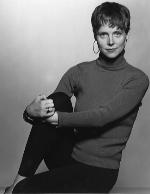
First, everyone asks: What Is a Movement Director?
I see myself bridging the gap between choreography and blocking, since a musical like POPE JOAN doesn't require big dance numbers. In fact, it would be ridiculous to have cardinals and popes doing kicklines and cakewalks. What I am is a member of the creative team who gives the production a unique visual and physical signature. Think of me as an art director in time and space. What Christopher wanted here was a Byzantine tableau come to life. We also want the ensemble to play very important parts as the people who surround these events, so their different characters -- beggars, soldiers, monks, cardinals -- have to be very clear. You can do that with costumes, but it's best if the cast physicalizes the characters too.
What do I actually do?
My first and foremost job is support Christopher's vision. We talk through each major chunk and decide what story or what part of the story we want to tell. Then I sketch in the shapes and formations -- moving the cast in groups and along paths with broad strokes. Finally, I start refining and simplifying from there.
I don't come into rehearsal with specific steps; I usually arrive with a strong idea on the final picture, and I have a few landmarks I want the cast to hit on their way. I put these before the ensemble as problems we all have to solve, and then we begin to solve them. This process empowers the actors to find their own, most expedient solutions.
I don't have the time to teach them an ensemble movement style. We only have one week to set all the big ensemble numbers, and there isn't a company class like you have with dancers. Through my process, however, I can pick and choose the movement they already do and get rid of the rest, so we distill down this particular group's style in relation to the style we are trying to work towards. I do warm-ups designed to introduce concepts and get them to improvise very quickly around Christopher's and my ideas of what our landmarks have to be. Usually it starts out big and scary, and the actors feel uncomfortable. Then one day, they all realize that what they are doing is really good, and they are really good at doing it, and then -- whoosh! -- we take off.
If I am doing my job well, supporting the director and the actors, then you shouldn't even be able to tell I was there. The entire show should feel natural and comfortable, even if what the actors are doing onstage is not. It shouldn't be like "oh -- here comes the musical number," and it ends and we'll go back to the play. It should be a seamless whole of visual, aural, emotional, and intellectual riches. We're working hard towards that goal now with POPE JOAN, and I'm enjoying the enthusiasm of this cast.
